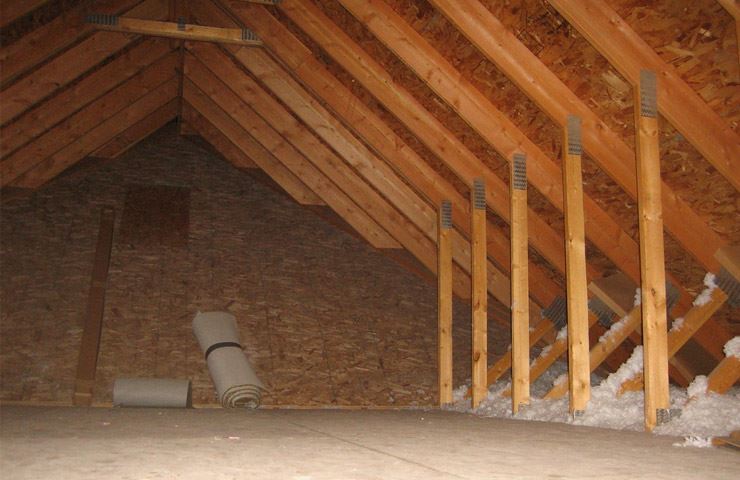Can you run your dryer vent into an attic? Usually, no. Most dryer manufacturers and some building codes will not allow you to run your dryer vent into the attic. But, even if your local building codes don’t address this issue and your manufacturer doesn’t disallow it, there are many good reasons you should not run your dryer vent through the attic. Here are some of them.

1. Heat Damage
Your dryer’s exhaust has a great deal of heat in it. Even though the exhaust will send much of that outside, the metal of the vent itself is still quite hot and does affect the things it touches. Adding heat to your attic space, which usually has unprotected insulation, is a bad idea. Insulation is highly flammable, and any additional heat will increase your fire risk. Further, even if a fire doesn’t break down, contact with heat can still do damage to the insulation and undermine your home’s ability to retain conditioned air, whether that is cool air in the summer or hot air in the winter. This can increase your utility costs.
2. Moisture Damage
Your dryer’s heat, when it comes into contact with the cold attic air, will also create condensation. In the attic, this can present quite a few challenges. You’ll rarely check the attic, so any condensation issues will go unchecked. This can result in quite extensive water damage.
The first thing to be affected will likely be the insulation. Water can render the insulation useless. Long-term, moisture can also cause serious damage to the structural wood in your roof, which can become a safety issue and be challenging to replace.
Lastly, unchecked moisture in the attic can create mold and mildew problems. Mold growth here can be destructive and also spread through the house before you realize that there is a problem.
3. Gases
Although they are rare, you should know that gas-powered dryers should especially not be vented through the attic. Gas-powered appliances are more likely to generate dangerous gases, and they should be vented as soon as possible and to the exterior wall. Otherwise, you may increase your risk of carbon monoxide leaks and other ventilation issues.
4. Roof Integrity
Yes, things can be vented through your roof. Your roof already has a plumbing vent and can even have skylights. But, in general, the fewer things running through your roof the better because every penetration is the risk for a leak. You should certainly not try to add a dryer vent through the roof yourself. You can void warranties and insurance coverage on your roof by doing this, not to mention you may create the opportunity for a leak.
Where Should the Dryer Vent Go?
In most cases, the dryer vent should be vented to the exterior of the home, through the wall, quite close to the dryer itself.
HVAC professionals can help you add in a proper dryer vent in order to protect your home. Our team can also help you with dryer vent cleaning services in Danville.
The post Can You Run Your Dryer Vent into an Attic? appeared first on Bradford Air & Heating.

